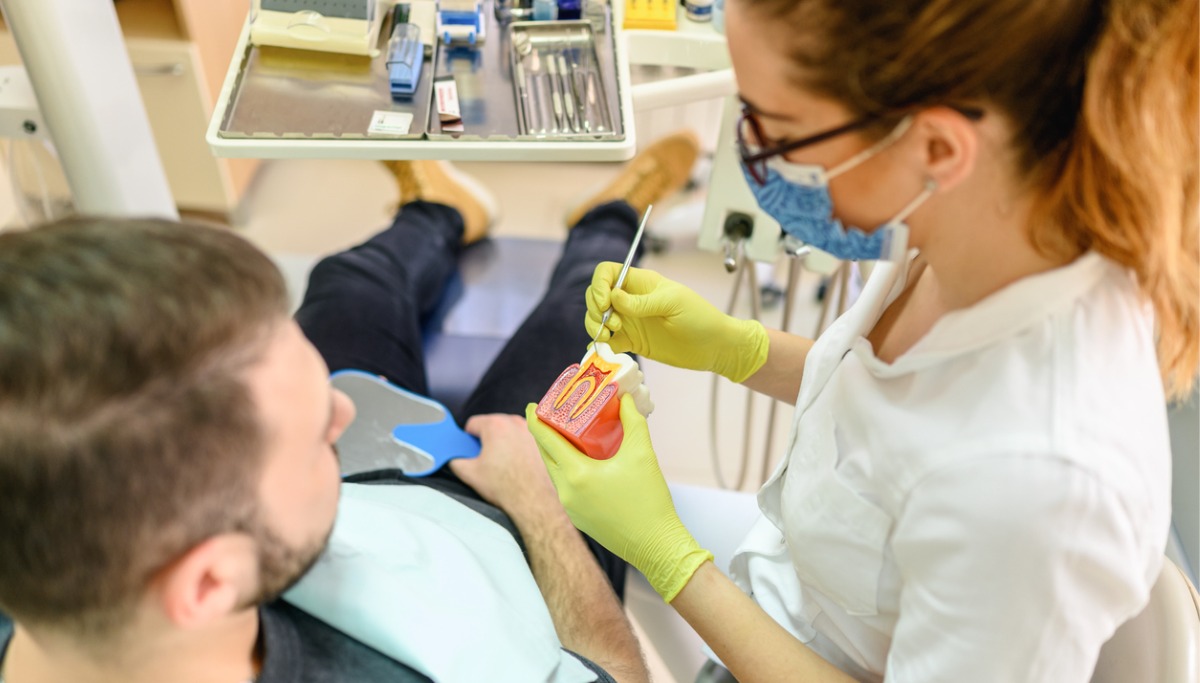Your privacy is important to us. Consistent with our Website Privacy Policy, we may use cookies and other tracking technologies to ensure the performance and security of our website. This may include disclosures about your use of the website to third parties. By using our website, you agree to its use of these technologies.


Periodontitis signs and symptoms
The term "periodontitis" refers to "inflammation around the tooth." Bacteria in dental plaque stick to tooth surfaces and live in pockets surrounding the tooth. If this plaque isn't removed daily, then the bacteria multiply, the gums become infected, and inflammation occurs as the immune system reacts to toxins that are released into the mouth. If left untreated, periodontitis can separate the attachment of the gum to the tooth and destroy the bone that surrounds the teeth, leading to loosened or lost teeth.
Unlike gingivitis, the early and more mild stage of gum disease, periodontitis is not reversible. Fortunately, it is preventable through good daily dental hygiene. If you're experiencing symptoms of periodontitis, then it is essential to diagnose the problem and stop it early before too much damage occurs. Regular dental visits allow your dentist to timely detect and treat problems. They can also advise you on prevention strategies and help to address any risk factors you might have that favor the development or progression of periodontal diseases. Let's take a look at the signs and symptoms of periodontitis.
What are the signs and symptoms of periodontitis?
Healthy gums are typically firm, pale pink in color, and fit snugly around your teeth. Periodontitis is always preceded by gingivitis, so the signs and symptoms are similar. As periodontitis spreads below the gumline and affects the bone support of the tooth, other changes will occur. Signs and symptoms will depend on the stage of the disease but may include:
- Swollen or puffy gums
- Bright red, dusky red, or purplish gums
- Gums that feel tender when touched
- Gums that bleed easily, especially when brushing or flossing your teeth
- Persistent bad breath
- Pus between your teeth and gums
- Loose teeth or new spaces developing between teeth (teeth shifting)
- Painful chewing
- Gums that pull away from your teeth, which can make your teeth look longer than usual
- A minor or significant change in the way your teeth fit together when you bite
When to see a dentist2
It's important always to follow your dentist's recommendations for regular dental checkups. If discovered and treated early enough, then periodontitis can be controlled and stopped from progressing into a more advanced stage. This is why it's crucial to make an appointment with your dentist or hygienist the moment you start to notice any of the symptoms listed above. The sooner you seek care, the better your chances of controlling the problem and preventing any further damage.
Final thoughts
Periodontitis is a destructive, irreversible form of gum disease; however, it can be controlled. Be aware of the symptoms and have your dentist monitor your oral health on an ongoing basis. It's also important to be aware of additional risk factors for periodontitis such as smoking, stress, certain medications, and medical conditions like diabetes. If you have periodontitis, then regular dental follow-ups with your dentist will help to ensure that the disease doesn't progress further.
Additional resources
Looking for more information? Learn more about gum disease:
Sources
1 Periodontitis: Symptoms, Causes, Treatment & Prevention. Cleveland Clinic. (n.d.). https://my.clevelandclinic.org/health/diseases/16620-periodontitis.
2 Mayo Foundation for Medical Education and Research. (2020, February 14). Periodontitis. Mayo Clinic. https://www.mayoclinic.org/diseases-conditions/periodontitis/symptoms-causes/syc-20354473.